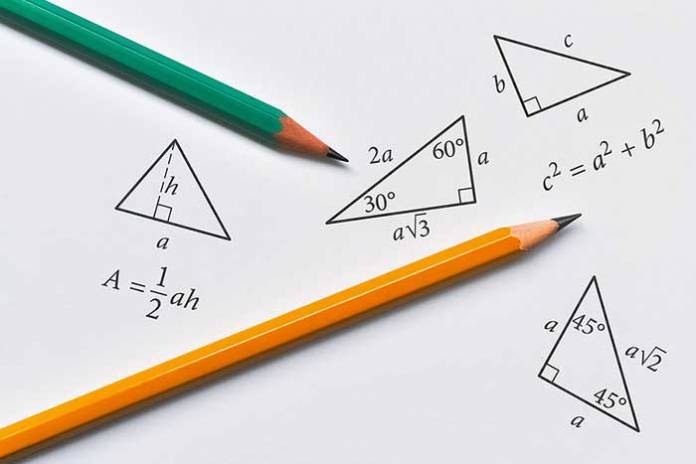
If we look closer at the geometrical shapes, then we will observe that the closed shapes actually start from a triangle. Like other shapes, the triangle is a shape too frequently observed around, and hence it is good to learn about its measurement aspects. Here, let us see how to find the area of an isosceles triangle.
Simple three lines joined together to create a triangle as well as three angles inside them, and the sum of all three inner angles in a triangle is 180 degrees. Different triangles are classified based on the relative size of the sides and the angle they create with opposite sides, and each kind of triangle uses the same fundamentals to measure. We may change the length of the triangle’s sides and the angle they form with each other in an infinite number of ways, resulting in a vast number of different forms of triangles. The three-sided polygon or the triangles sometimes have symmetry in their shapes, and such triangles are isosceles and equilateral triangles.
An isosceles triangle has two sides that are of the same equal measure or length. These two equivalent sides always converge to the two vertices of the base. The right triangle, equilateral triangle, and scalene triangle are some more examples of triangles taught in geometry. A triangle is a. The internal angles of any given triangle add up to 180 degrees. While an equilateral triangle on the other side has all the three sides as equal, and each of the three angles is 60 degrees.
The area of a triangle is proportional to one-half of the base length multiplied by the triangle’s height. The area will be determined by the triangle’s shape and measure. In architecture, the area of a right triangle has been used to plan buildings and houses.
The area of an isosceles triangle can be calculated with the help of Heron’s formula, which helps calculate the area if the measures of all three sides are known. This formula is equal to the square root of [s(s-a)(s-b)(s-c)], given that a,b and c are the sides of the triangle and ‘s’ denotes the semi-perimeter of the triangle, wheres = (a+b+c)/2. This can also be used in the area of the scalene triangle formula.
Another measurable aspect is the perimeter of the triangle, which is equal to the sum of the sides of the triangle, so since two of the sides are equal ( suppose ‘a’), and the third side is ‘z,’ hence the perimeter would be 2a + z.
In architecture, the field of triangles is considered in a variety of ways. When building a bridge, various kinds of triangles are used to form the frame. Triangles are also used in the construction of a variety of mechanical and structural links within the bridges. Triangle shape finds its place in the building of planes too, where the wing is made up of several small triangles. This is because the triangle pieces are simpler to bring together than wider polygons such as squares and rectangles.
Understanding the various forms of geometrical shapes and how to calculate their crucial measures is beneficial for higher math studies. Math worksheets are helpful in providing students with the required practice. Several online sites, including Cuemath, have made it possible to access a variety of geometry worksheets through the internet. Students can practice these by themselves as they are easy to follow along with precise instructions. If they become perplexed, they can consult the answer keys that come with these worksheets, which offer detailed explanations of the solutions provided by Cuemath’s team of experts.











